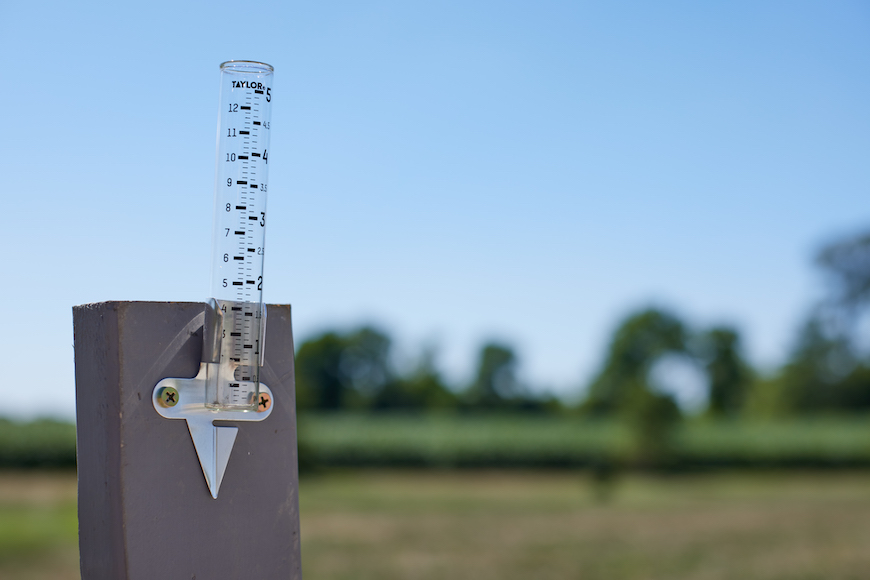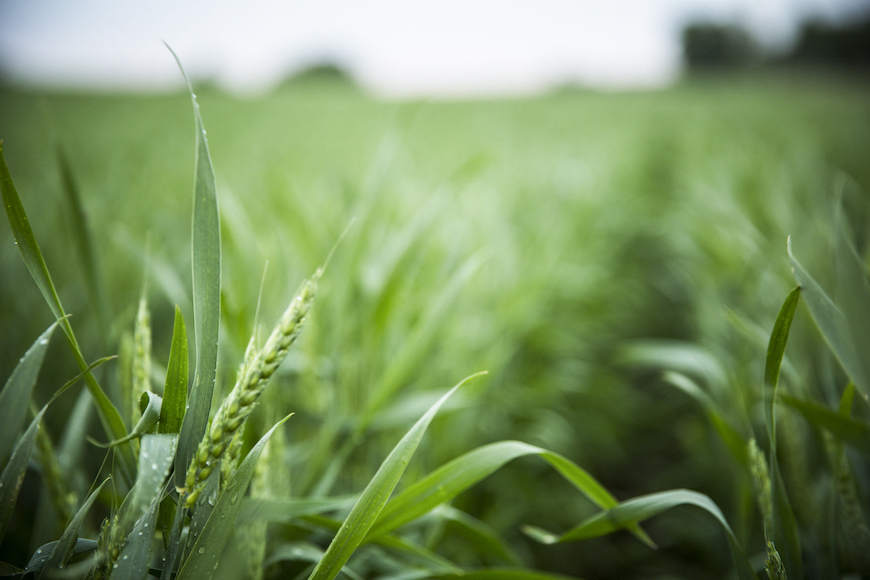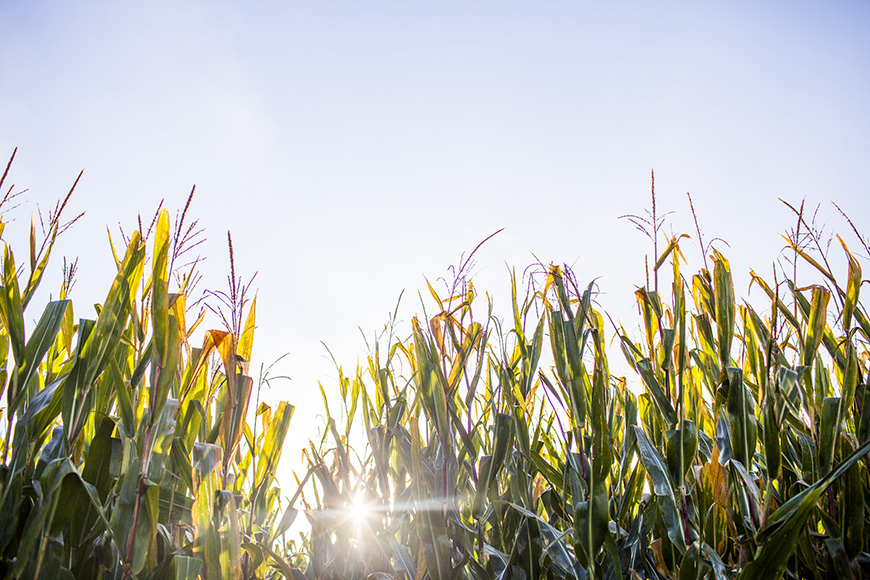Tips For Managing Drought-Stressed Fields

You can purchase the right equipment, seed and inputs to set your season up for success, but you can’t control the weather. Navigating the challenges of Mother Nature is one of trickiest parts of farming. This is especially true when it comes to managing crops through drought stress.
Lack of moisture impacts plant performance during all stages of growth. When it happens in early vegetative stages, crops tend to be more resilient. Fields experiencing prolonged drought conditions during tassel, pollination and grain fill have a much more difficult time recovering yield potential once it’s lost.
While you can’t make it rain during these critical times, there are ways to manage drought-stressed fields to help curb yield losses and keep corn growing strong between rainfalls.
Adding a product like MasterLock® adjuvant to the tank with a fungicide will help you make the most of your fungicide application. MasterLock adjuvant optimizes droplet size to reduce drift potential and helps ensure more fungicide penetration into the canopy. It also contains a surfactant to help cover more leaf surface area.
To learn more, talk to your trusted WinField United retailer.
All photos are either the property of WinField United or used with permission.
© 2025 WinField United. Important: Before use always read and follow label instructions. Crop performance is dependent on several factors many of which are beyond the control of WinField United, including without limitation, soil type, pest pressures, agronomic practices and weather conditions. Growers are encouraged to consider data from multiple locations, over multiple years and to be mindful of how such agronomic conditions could impact results. Answer Plot, MasterLock, R7, Voyagro and WinField are trademarks of WinField United. All other trademarks are the property of their respective owners.
Lack of moisture impacts plant performance during all stages of growth. When it happens in early vegetative stages, crops tend to be more resilient. Fields experiencing prolonged drought conditions during tassel, pollination and grain fill have a much more difficult time recovering yield potential once it’s lost.
While you can’t make it rain during these critical times, there are ways to manage drought-stressed fields to help curb yield losses and keep corn growing strong between rainfalls.
Watch for signs of stress.
One way to tell if corn is severely stressed is leaf rolling. This response is typical during the hottest part of the day when temperatures are high. If leaves are rolled in the morning or during cool times that’s an indication you may need to take action.Consider applying a biostimulant fertilizer.
Products like Voyagro® biostimulant fertilizer use amino acids and other naturally occurring ingredients to enhance performance by triggering favorable responses in plant physiology. They signal the need to keep growing through dry weather to help minimize yield losses. The ideal time to apply biostimulants is slightly ahead of prolonged dry weather so crops are prepared, but they can still be effective after some drought conditions have set in.Weigh the benefits of a strobilurin fungicide.
Strobilurin fungicides are proven to produce a positive impact on plant health outside of disease control. Plants naturally produce a hormone called ethylene that can reduce photosynthesis and growth, increase kernel abortion and drive fast maturation. Strobilurin fungicides slow the release of ethylene to help protect yields. Even if disease pressure is low, applying at tassel can encourage optimum pollination when moisture stress is high.Adding a product like MasterLock® adjuvant to the tank with a fungicide will help you make the most of your fungicide application. MasterLock adjuvant optimizes droplet size to reduce drift potential and helps ensure more fungicide penetration into the canopy. It also contains a surfactant to help cover more leaf surface area.
Protect against spider mites.
Spider mite populations typically explode during periods of hot, dry weather. They move out of ditches quickly and can severely impact crops. Be sure to have an insecticide on hand labeled for spider mites and prepared to use a higher rate for full pest control.Use data to make decisions.
While fungicides and biostimulant fertilizers encourage crop resilience, they do not replace the positive impacts of rainfall. If yield potential is already degraded and forecasts look bleak, it may not make financial sense to apply products. Conversations with your retailer and agronomist can help you determine the right decision for your situation.To learn more, talk to your trusted WinField United retailer.
All photos are either the property of WinField United or used with permission.
© 2025 WinField United. Important: Before use always read and follow label instructions. Crop performance is dependent on several factors many of which are beyond the control of WinField United, including without limitation, soil type, pest pressures, agronomic practices and weather conditions. Growers are encouraged to consider data from multiple locations, over multiple years and to be mindful of how such agronomic conditions could impact results. Answer Plot, MasterLock, R7, Voyagro and WinField are trademarks of WinField United. All other trademarks are the property of their respective owners.





